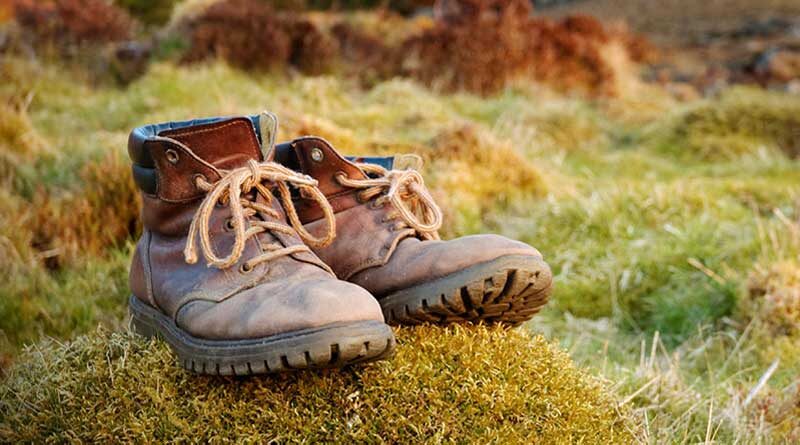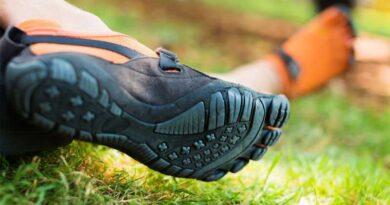How Often Should You Replace Your Hiking Boots?
The average hiker, someone who hikes about 10 miles per week, should generally replace their boots every 500 to 1,000 miles. The quality of your boots will play a significant role in where you fall within that range. No matter what boots you have, at about 1,000 miles, there should be some clear signs that it is time to retire your older pair and invest in a new one.
The life of your hiking boots really is reliant on the quality and craftsmanship behind the construction of the boots. At the very least, a regular hiker should be noticing that it is time to replace their boots every 3 to 6 months. However, there are some clear indicators that you should consider to be the most significant way to determine what kind of shape your boots are in and if it is time to toss them.
Signs you need to replace your Boots
Of course, there are plenty of cosmetic indicators that should let you know that it is time to get a new pair of hiking boots. These include cracked leather, peeling soles, and other signs that the boots no longer serve their purpose. But, there are also some indications that are less overt.
1. Poor Ankle Support
The support provided to your ankle by your hiking boot is essential to prevent an injury or strain to your ankles. Having the proper support ensures that you aren’t passing along any damage to your knees or even your hips. Worn-out support on your hiking boots can make you overcompensate your footing to add more stability to the poorly supported foot. This causes you to put more weight on your other foot than it used to, which can absolutely lead to an injury.
If you notice that your ankles do not feel as supported or firm as they did when you began wearing the boots, it is likely time to take a look around the ankle support. If you notice that it has become too worn, soft, flat, or thinner than it once was, then it is time for a new pair of boots.
2. New Pains
Listen to your feet and legs. They are the heart of your walk! If you frequently have pain or discomfort in your feet, legs, hips, or even your back, it may be a sign that your hiking boot is no longer functioning as it should. Experiencing new pain throughout your lower body during a hike is one of the clearest signs that you need to replace your hiking boots.
When any part of the insoles or the tread becomes too worn out, it leaves you at an increased risk of injury. This is because it can cause your foot to slide around more in the shoe, which decreases your stability, or it may allow your ankle to bend in ways that it shouldn’t, which will add stress to your joints. Don’t take a chance when it comes to your pain and discomfort. Using old hiking boots or those that are in poor condition can significantly impact your health, which may mean that you aren’t able to hike for a long time while you heal.
3. Don’t forget to check the Laces
Any part of your boots that secures or houses your laces is much more important than most give it credit for. Your laces, eyelets, and loops are all responsible for keeping your foot and ankle secure and stable during your hike. When these areas are compromised, your risk of injury increases exponentially.
Eyelets are the holes in a hiking boot or shoe that your laces go through. Some hiking boots have eyelets, while others have lacing loops, which are usually made of metal and line up where the eyelets are usually located. Hiking footwear with bad lacing loops are eyelets that can lead to discomfort, pain, and injury over time. This problem is especially noticed with high-top boots, as the laces provide an exponential amount of ankle support.
If you have started to notice that your lacing loops are beginning to peel away from your boots or that there is cracking around the eyelets, then that is usually a good indication that it is time for a replacement pair.
4. Take care of your Feet
While nobody is excited to spend more money on hiking gear, you have to take care of your feet. Show them some love! They take you so far on your hikes, and they need to be adequately cared for. The best way that you can protect not just your feet but your entire lower body is by wearing boots that are in good shape. This will ensure that your feet and your ankles are secure and well protected during your hikes, which will help to protect the rest of your body.
Conclusion
Whether you are trekking through rocky terrain or taking a relaxing hike through milder grasslands, the boots that you choose to wear are an essential factor in the success of your hike. While hiking boots are incredibly important, it can be challenging to know when to replace them. Even if you only sport the top-of-the-line hiking gear, time and wear and tear defeats even the best of hiking boots – they all have their expiration date.




